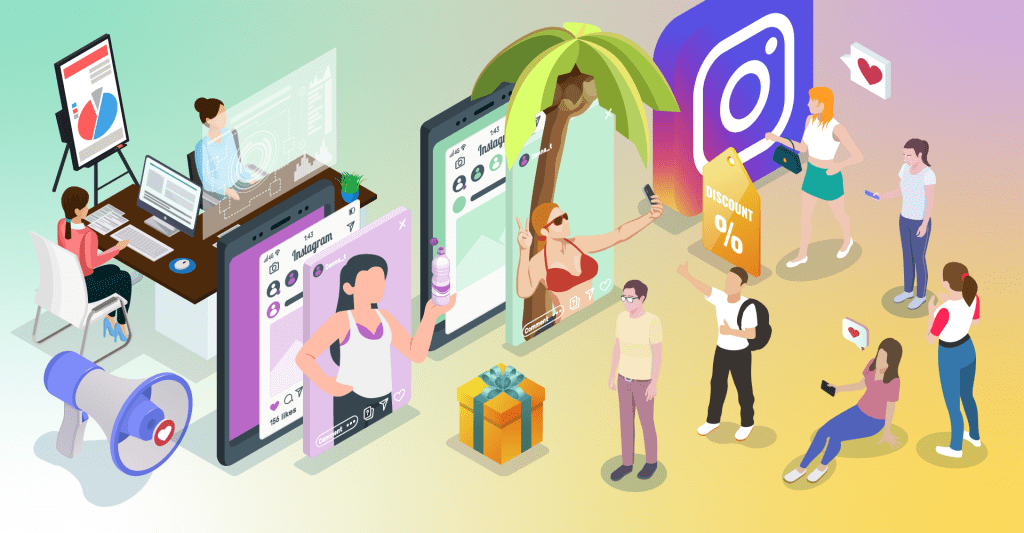There are many different ways to make money as an influencer, but the most common is to promote a product or service in exchange for monetary compensation, such as by promoting a product or service on social media.
Content creation is the primary service provided by influencers with an intention to make a profit that are fueled by brand-specific revenue (both monetary and nonmonetary), audience-engagement revenue, or platform compensation.
Influence comes from authenticity and trust, which are linked to the audience’s trust in the content and their perception of its authenticity, and can be used to influence consumer purchasing behaviour. In recent years, the influencer industry has grown significantly and is marked by the emergence of new market participants and business models.
The epidemic delayed the flow of money from marketers into influencer marketing, much as it did in the Venture Capital business.
The influencer industry has seen significant growth in recent years, according to economic data. Aside from influencer marketing, influencers are now using a variety of platforms and online communities to connect with their audience.
The use of marketing agencies to find influencers who can target a specific demographic of consumers is another trend that has emerged in recent years. They’re diversifying their funding sources and frequently relying on the support of their fans or their own commercial enterprises to keep going. Among the new revenue streams emerging from social media platforms are advertising, subscription/crowdfunding, and tokenization.
Quick Guide to Influencer Marketing: Everything You Need to Know
- An evaluation of the significance of influencer marketing by Google was carried out in 2018. Over 61,000 people are searching for the term “influencer marketing,” according to Google.
- More than 80% of Venture Capital investments into startups were slashed during the coronavirus crisis, with only 5% of investment dollars going to new businesses. On the other hand, social media-based startups led by influencers have defied the general trend. Social media followings are increasingly being used as a source of revenue in a wide range of industries, including fitness, fashion, and skincare.
- Experts at the search engine giant also found that 92 percent of those polled take influencer recommendations into account before purchasing any products.
- According to these stats, influencer marketing is a powerful marketing strategy, and it’s no surprise that companies are investing heavily in it.

Influencer Marketing Post-Covid-19
The pandemic began in 2020 and many businesses went bankrupt. As a result of these changes, influencers shifted their focus to extensive online marketing tactics. A number of influencer marketers were able to successfully navigate the Covid situation while also allowing for the survival of a number of businesses.
Influencer marketing has received millions of dollars from advertisers over the years, but the pandemic put a halt to that flow of money. For the most part, the influencer ecosystem was shaken, but those who have built their own brands were able to weather the storm just fine.
The following are a few strategies that have proven successful in the post-Covid era for influencer marketing experts. Over the past two years, the importance of influencer marketing has grown significantly.
In order to maintain high levels of engagement, live streaming should continue.
During the epidemic, more individuals were utilising social media and other platforms, and 45 percent of users were engaged in obtaining updates from different influencer channels on a normal day.
For a long time, companies were unaware of this shift in customer behaviour. Various businesses stepped up their collaboration efforts in order to connect with influencers and gain sway on their respective social media pages.
In the Venture Capital ecosystem, a small number of highly successful investments compensate for a large number of failures.
We Don’t Know How Smart Customers Can Be!
Consumers have had more time to thoroughly research products through social media, influencer reviews, and blog posts as a result of the Covid-19 situation. To avoid companies that looked shady or didn’t get much support from social media stars, people became more savvy.
In contrast, high-profile social media influencers had to be enlisted to spread the word about a company’s brand. Customers were increasingly looking to “storytellers” for their initial point of contact before making a purchase, therefore corporations could no longer depend on sending updates to their social media sites or newsfeeds.
E-business. In the Lockdown, Become a More Social Commerce Thing
The typical online e-commerce experience is undergoing a metamorphosis in the form of social commerce.
Influencer marketing and social commerce plugins have helped companies realise the importance of converting visitors into customers. Interestingly, the social commerce feature allowed Instagram users to buy products directly from the brand’s Instagram page, and the other way around, as well.
Because of this, online businesses have come to realise the importance of influencer marketing from a buyer’s perspective. Your average internet user can purchase the product directly from the social commerce system without having to switch to the Google Search bar to find a brand’s official website.
We believe that social media commerce will continue to thrive and grow in the near future, despite the Covid-19 crisis.
Identifying a market niche in social media, one of the fastest growing industries in the world, was the key to success. Venture Capitalists are starting to notice that attention is the new currency.
Spending on Influencer Marketing
As people spend more time on social media, it’s inevitable that they’ll engage with influencers in some capacity. It was found that 96% of US and UK consumers who follow influencers were engaging with them more or the same extent prior to this year’s coronavirus outbreak.
Despite the rise in social media usage, the economic downturn caused by the coronavirus pandemic has had a significant impact on marketing budgets.
2022 Influencer Marketing Facts
- A $16.4 billion influencer marketing market is expected by 2022.
Influencer marketing has proven to be a successful business model time and time again. It grew from $1.7 billion in 2016 to $9.7 billion by 2020.. It rose to $13.8 billion in 2021, indicating steady growth. The market is expected to grow to $17.0 billion this year.
Growth in social media usage is attributed to the rise in popularity of short video formats on platforms like Facebook and the impact of the global pandemic on consumers, which sparked social media interaction.
Companies we’ve worked with have seen their inbound calls from Venture Capitalists looking to invest soar since lockdown measures were implemented in March 2020.
- In 2021, the number of companies providing influencer marketing services increased by 26%.
A growing number of companies and service providers have sprung up to support the influencer marketing industry. In 2021, there will be 18,900 influencer marketing-related companies in the world, an increase of 26%.
- In terms of influencer marketing, Instagram is the most popular social media platform for brands.
Even though Instagram’s monthly active users (1.3 billion) are less than Facebook’s (2.89 billion), which is one of the most popular channels with influencer marketing campaigns, its popularity has grown in 2021, with the majority of brands choosing Instagram as their preferred channel.
- Video ads on Facebook have a higher rate of interaction than image ads.
More people will click on and convert on ads when they are accompanied by text rather than images, which can be passively viewed or quickly consumed. Video ads have higher click-through rates, especially vertical videos and mobile videos.
New brands built by influencers raise serious questions about the long-term viability of the traditional Venture Capital model.
- Instagram is still a good place to find new products and services for your customers.
No wonder Instagram will continue to be a valuable lead source well into the year 2022, with 79% of marketers including it in their campaigns. When it comes to finding new things, 83 percent of its users rely solely on this versatile platform. According to a study, 87 percent of people who saw product information on social media took a specific action after seeing the content.

When defining influencers, experts point out certain limitations.
As a consequence of an expert session performed inside the research, a more precise definition was arrived upon. Influencers confront a variety of difficulties, according to industry experts, including rapidly evolving business models that go beyond influencer marketing, a small but relevant audience, and the increasing professionalism of content production.
The term “influencer” has been replaced by the term “content creator” as a means of internet entrepreneurship for individuals and businesses of all sizes. Mega-influencers are frequently aided by a content creation team. Influencers’ teams are frequently overlooked when it comes to cultivating a genuine connection with their followers. In total, there are 50 million content creators worldwide, but only 2 million of them can make a full-time career out of it, according to SignalFire. As content providers rather than influencers, these actors are seldom referred to as “influencers” on social media. ” Do-It-Yourself” aesthetics are purposely utilised to disguise the participation of management, for example.
Investors (Venture Capitalists) who can successfully break into the space and, more importantly, learn to work with individuals rather than traditional startups, will reap the benefits and play an important role in the reconstruction of the investment environment.
One business model that has a clear link to advertising activities is influencer marketing. Other business models (like direct selling, crowdfunding, or affiliate marketing) are more focused on content monetisation than advertising activities. Concerns regarding media, advertising, and consumer regulation are raised by the influencer marketing business model.
The legal status of influencers as traders or non-traders may be influenced by a lack of harmonisation of rules, such as regulations relating to company incorporation and legal personhood with respect to commercial gain.
For these reasons, as well as the fact that it may be difficult to precisely calculate interactions, influencers should not be defined just by the number of their following.There are questions about how to measure engagement and access data from a regulator’s perspective because the number of followers is a biassed metric that cannot be defined (or built) cross-platform.

